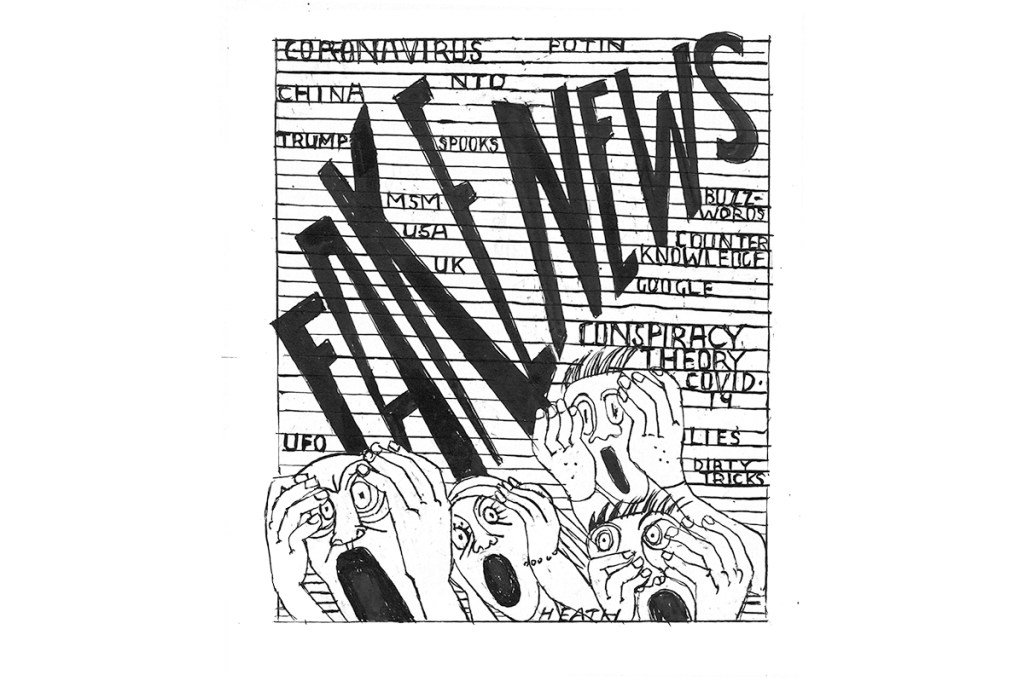Just over a decade ago, I published one of those books with an annoying subtitle beginning with the word ‘how’. It was called Counterknowledge: How We Surrendered to Conspiracy Theories, Quack Medicine, Bogus Science and Fake History. My targets included Michael Moore, creationists and homeopaths. I concluded that we couldn’t stop anyone circulating their ‘counter knowledge’ on the internet, but we could at least hold to account ‘lazy, greedy and politically correct academics’ who had abandoned scientific methodology in favor of postmodernism. Otherwise, I warned pompously, quoting the title of an etching by Goya, ‘the sleep of reason will bring forth monsters’.
Well, this year a monster called COVID-19 appeared in our midst, producing a pandemic of counter knowledge. But reason hasn’t fallen asleep. Something worse has happened. Those of us who believe that we can distinguish between truth and falsehood using the evidence of our senses — the basis of scientific methodology — are finding it horribly difficult to locate the boundary between the two. And the real culprit is something we can neither un-invent nor live without: digital technology.
Three disastrous developments rooted in the digital revolution helped generate the current chaos. The first was Russia’s discovery that the output of western news outlets could be mimicked. The journalist Peter Pomerantsev, who worked for Putin’s goons, has written about the way the Kremlin ‘climbed inside everything’, switching messages at will to seduce European nationalists, the globalist left and American fundamentalist Christians. The technique spread throughout eastern Europe, often taking the strangest forms. As we speak, spammers in Kosovo are sending ‘Blue Lives Matter’ memes to patriotic Americans. It’s a financial scam, but are they also politically motivated? No one is sure.
The Kosovar spammers use Facebook — which brings us to the second, obvious, development: the explosion of news content on social media. Even if Facebook and Google were super-scrupulous (which they aren’t) this would be impossible to police. The third development is bias in the news. What they deliberately don’t report is as significant as what they do.
Readers cotton on to this, and look elsewhere for information. Inevitably, they are propelled towards supposedly ‘independent’ sources of news, and especially YouTube, owned by Google. The volume of dubiously sourced information circulating on this video sharing platform is too vast to measure. But you get some idea from YouTube’s announcement that in March last year it removed one million channels for violating its ‘spam, deceptive practices and scams’ policies. These policies barely touch propaganda and conspiracy channels, which merely lose their ‘recommended’ status if enough people complain. Crucially, if you’ve already ‘liked’ material from one of these channels, YouTube keeps pushing it at you. Its algorithms can’t distinguish between true and false data, except very crudely (by looking for neo-Nazi buzzwords, for example).
But much of the time, humans have as much trouble sniffing out fake news as the bots. An expat Chinese friend of mine, fed up with pro-Beijing propaganda, started following New Tang Dynasty (NTD), a network that breaks real stories suppressed by the Chinese politburo. But he noticed strange messages creeping in, and he discovered that NTD was set up by members of Falun Gong. This mostly benign quasi-Buddhist movement teaches meditation, with an apocalyptic subtext. And not always benign, because journalists from Falun Gong’s Epoch Times news service also set up the noxious YouTube channel Edge of Wonder, by their own admission reporting to NTD and promoting its ‘awesome message’. Edge of Wonder’s output is dominated by the nonsense I attacked in Counterknowledge. The beyond-parody title of one episode says it all: ‘Ancient Civilizations Modified Human DNA with SECRET Pyramid Technology’. But the conspiracy theory it pushes hardest is the notorious QAnon, a version of the Illuminati myth in which America is controlled by a criminal ‘Deep State’ run by the Clintons, Barack Obama, George Soros and Bill Gates with help from the Bush family and bloodthirsty neocons.
This Deep State is behind the international drugs trade, human trafficking, the Mafia and Big Pharma. Its latest weapon of mass destruction is, of course, COVID-19, manufactured by its Chinese allies and spread by radiation from Huawei’s 5G towers that weaken the immune system. Or something. There are several rival COVID-5G theories out there; Edge of Wonder’s is probably the only one that incorporates hidden Chinese pyramids.
This craziness isn’t confined to America. In Britain, vandals have been setting fire to phone towers, forcing the major networks BT, O2, Vodafone and Three UK to issue a joint denial of any link between 5G and the virus. Had the arsonists been watching YouTube or their Facebook feeds? It seems a safe bet, given that according to the regulatory authority Ofcom, 49 percent of Britons now get their news from social media, a proportion that has risen from 18 percent in just four years.
The figure must be close to 100 percent for conspiracy enthusiasts — but here we run up against a problem. It’s not only populist halfwits who are conspiracy-minded. Look at the fervor with which bogus reports of Putin engineering Trump’s 2016 victory were embraced inside the Beltway: suave Democrats and NeverTrumpers started babbling like true believers at a UFO convention.
The awkward truth is that digital technology, in addition to circulating conspiracy theories, also empowers actual conspiracies of every variety, mostly petty scams, taking advantage of a digitally driven collapse of political authority. No western government can run a Deep State now, however many surveillance and propaganda tools it has at its disposal. Even China is struggling to do so.
And this is the moment when the virus chooses to show up, attacking not just people but also the already sketchy boundary between true and false information.
We don’t know how COVID-19 started or how best to fight it. The science is genuinely unclear. This is partly because viruses are such a complex phenomenon: hundreds of new medical studies from respectable sources float staggeringly different ideas about this one. Also, the presentation of data from official sources is shamefully inept. Every day we are confronted with graphs surveying COVID death rates in different countries and these are often worse than useless because they are comparing apples and pears: for example, those that include care home deaths, such as the UK, and those that don’t.
***
A print and digital subscription to The Spectator is just $7.99 a month
***
One fatuous example, entitled ‘How they beat COVID-19’, shows rows of graphs with blue lines in the shapes of mountain peaks, representing South Korea, New Zealand, Austria, etc — ‘massive testing, strong lockdown, face masks for everyone’, without saying who did what or explaining how they measured data. Then there’s a dunce’s corner for the US, UK and Sweden: graphs in red lines that simply climb to a peak. This piece of disinformation was created by an Ivy League research fellow. Which is another problem: it’s harder than ever to distinguish the digitally published rants of a rogue academic from properly considered output produced by these universities and their faculties.
Meanwhile, China keeps lying its head off about the virus, which may well have accidentally escaped from a laboratory in Wuhan. But when we discuss that possibility we find ourselves uncomfortably close to the nutters who tell us that Beijing and Bill Gates cooked it up together.
And so we are driven further into the battleground of infowars, which, to a large extent, are being fought blindfolded. And we are confronted by the great paradox of the digital 21st century: the more we know, the less we know.
This article is in The Spectator’s June 2020 US edition.

























